Planting Snowdrop Bulbs: How To Grow Snowdrops and Care For It Later
A guide on when, where, and how to plant snowdrops & care for them
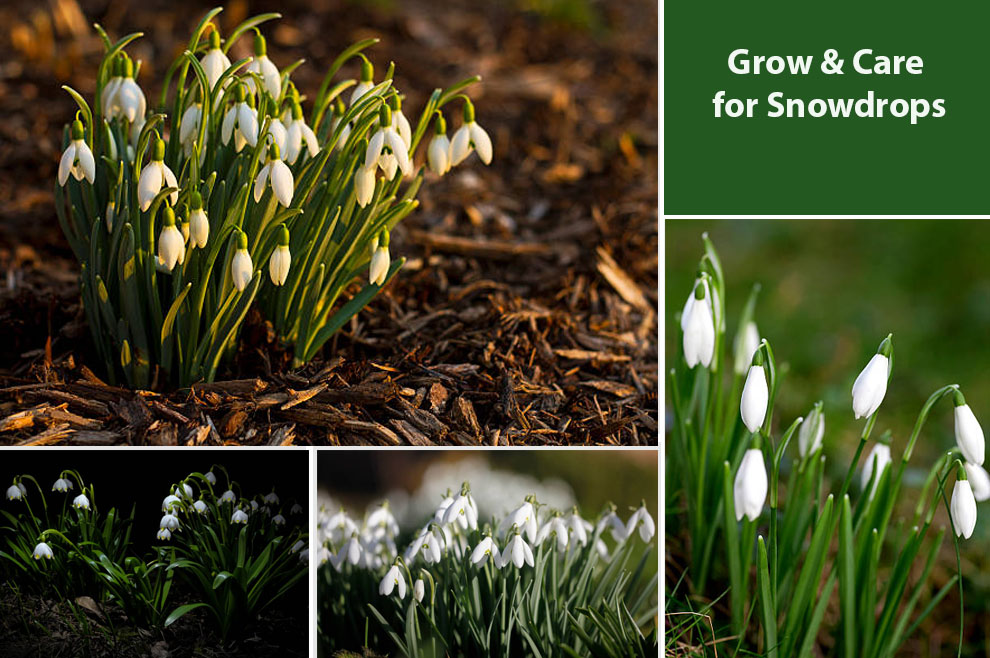
As is apparent, Snowdrops are heralded as the first sign of spring. They can grow in moderate and cold winters but do not appreciate the warm winters. So, if you live in Florida, Southern California, or any other hot climate, you may be unable to offer the necessary care that Snowdrops need. Hence, you may have to give them a pass in your garden.
If you get where and when to plant snowdrops right, Snowdrops can be a value proposition in your garden.
These cheerful bulbs demand almost no fuss and maintenance and can thrive in multiple spots in the yard. They are rarely bothered by diseases or pests. Depending on where you grow them, with minimal snowdrop care, you will see the flowers blooming between February and March, typically when snow still envelopes the ground.
Sadly, snowdrops are toxic to both humans and animals. So, if that is a concern (you have children or pets), you can give them a pass. But, if that is not a problem, it is a must-have addition to any landscape. So, today let us learn how to grow these beauties and care for them.
How To Grow Snowdrops?
Typically, the snowdrops thrive in partial shade, provided you plant them in well-draining soil. They are self-pruning. So, you do not have to prune them, but it is always a good idea to get rid of the dead and decayed ends to ensure that the plant concentrates its nutrients and energy on the healthy bulb for an appealing display in the next growing season.
We recommend planting the bulbs in the green between February and March. You can also grow them as dry snowdrop bulbs from October to November.
Below, we will discuss, in detail, everything you must know about the correct planting of snowdrops.
A. Where to plant snowdrops?
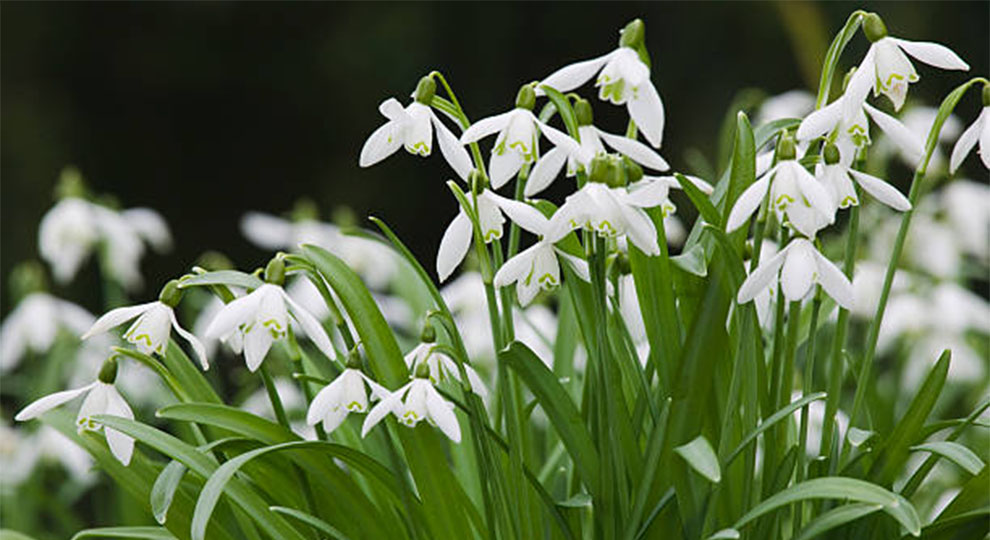
Snowdrops are evergreen and thrive in hummus-rich, well-drained, moist soil in the dappled shade. Grow them underneath deciduous shrubs like Dogwood, botanically known as the Cornus alba ‘Sibirica.’
Alternatively, you can also plant them along the front of the borders, where herbaceous plants assure good ground cover while the snowdrops are in a dormant stage. The Snowdrops also make for an excellent deciduous hedge.
So, you can consider planting the bulbs at the front of the spring border displays in the grass or rock gardens. Snowdrops can be grown in both containers and soil. However, they will fail to thrive in soil, which dries out quickly, and demand annual re-potting, which is not ideal for snowdrops.
B. When to plant snowdrops?
Ideally, plant the snowdrops in early fall. So, be prompt in buying them since they can be shopped from your mail-order company or a local nursery for a brief period in the autumn, as they are sold as undried bulbs. If you do not pick the right planting time, your plant may not be as healthy as you would want it to be.
Most people do not usually store them. So, consider planting them green from February to March. But, if you can find stored bulbs, you can plant the dry snowdrops between October and November.
C. How many snowdrop bulbs should I plant together and how deep to plant them?
Typically, most people plant snowdrops in bundles because of their small size. Since they are small plants, they fail to make an impact individually. Hence, botanists recommend planting them close together in groups of at least twenty-five.
So, when you go shopping for snowdrops, pick them in bundles and grow them together during the correct snowdrop planting time. Mass planting is beneficial as it seamlessly compensates for the small size of the individual snowdrops.
When you plant the snowdrops in a bundle, you must still give them space to spread and blossom to their capacity. Hence, you should dig holes and consider planting the bulbs at least three inches apart, and when it comes to how deep to plant snowdrop bulbs, ensure their pointed top is at least two to three inches below the ground surface.
In addition, position the snowdrops with their pointy head facing upwards, and after planting the snowdrops, water well to ensure that the dug soil around the bulb settles evenly.
How To Plant Snowdrops Outdoors?
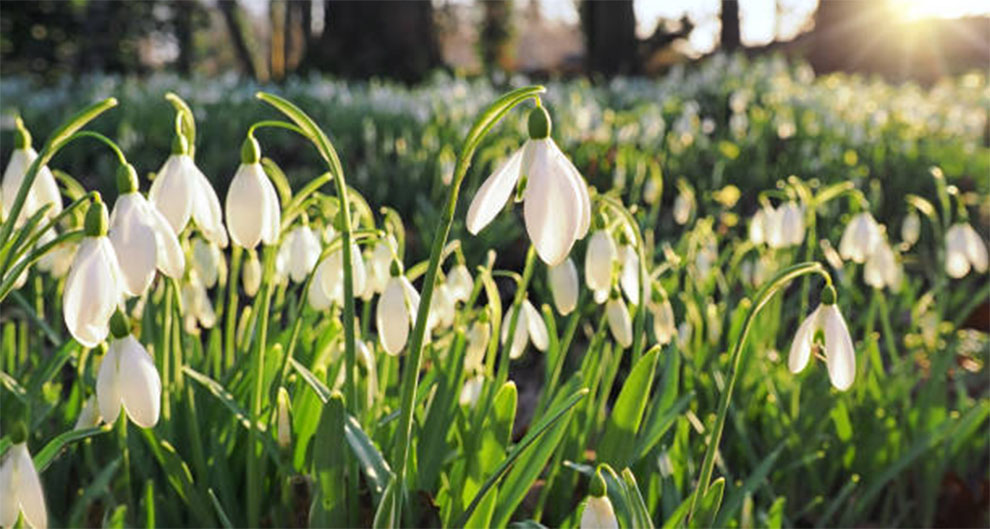
Here are the steps you need to follow to plant snowdrops:
- Look for a location with well-draining soil. If you are planting a few hours after a hard rain, there may be puddles of water. In that case, consider scouting for another location to plant the trees.
Alternatively, if you cannot decide where to plant snowdrops, you can try amending the same soil using an organic material. It can raise the soil level by two to three inches and elevate the drainage ability. You can use a potting mix like ground bark, compost, decomposed manure, or peat moss.
- For good growth, ensure your chosen spot receives light to moderate shade. However, if you plant Elwesii, care requirements are different. How to grow snowdrops Elwesii? Plant them in a location that receives full sun-to-light shade.
- Next, start digging the holes. You must grow them in clusters, maintaining ample space between two individual snowdrops.
- Once you finish planting snowdrop bulbs, you need to water thoroughly and evenly around the soil. If you exercise good care, the snowdrop bulbs produce roots in a week or two. However, you will not find any activity above the soil until early spring or late winter.
- After the blooming season ceases, snowdrops start their energy conservation mode for the following year’s show. So, let the leaves photosynthesize till they yellow and wither before you prune the spent foliage.
It compromises the plant’s ability to nourish the following year’s flowers if you trim the green foliage. Consequently, there will be smaller or lesser flowers in the next blooming cycle.
- Maintaining a watering schedule is an essential aspect of snowdrop care. Before this, you must water the flowers during winter and autumnand nourish them with a water-soluble feed. It can help the snowdrop bulbs produce top growth and new roots.
Of course, the snowdrops can grow without any added feed but providing fertilizer motivates larger blossoms, more flowers, and a longer life for the bulbs.
How To Plant Snowdrops In Urns, Pots, Containers, Tubs, and Barrels?
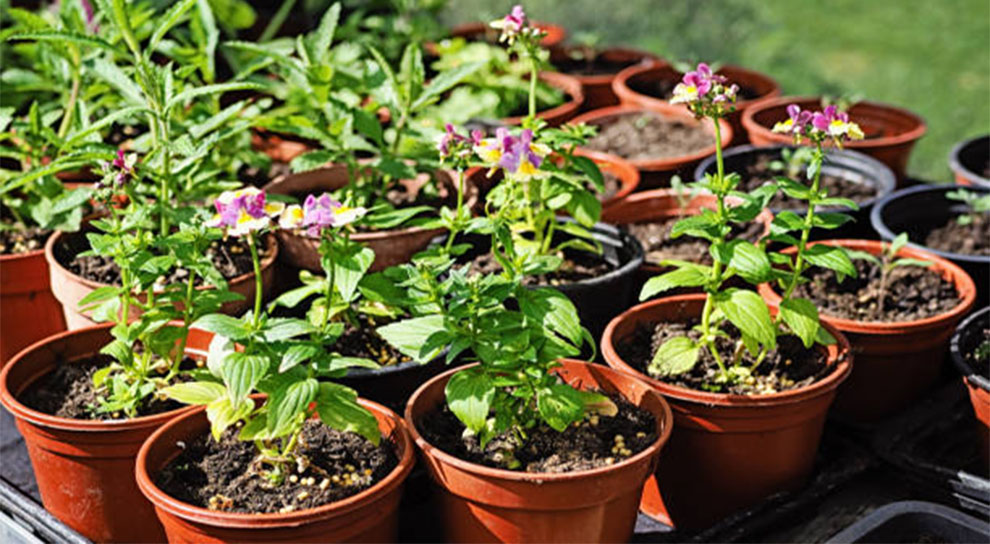
Here are the steps you need to follow to plant snowdrops:
- Take a sturdy container, and fill it with well-drained, top-quality soil mixed with garden compost. Typically, every commercially available potting medium works well. The potting container must have adequate drainage holes because the snowdrops do not thrive in the waterlogged soil. Excessive sitting water can cause root rotting.
- Steps 2 to 6, same as above
How To Care For Snowdrops Post Planting The Bulbs?
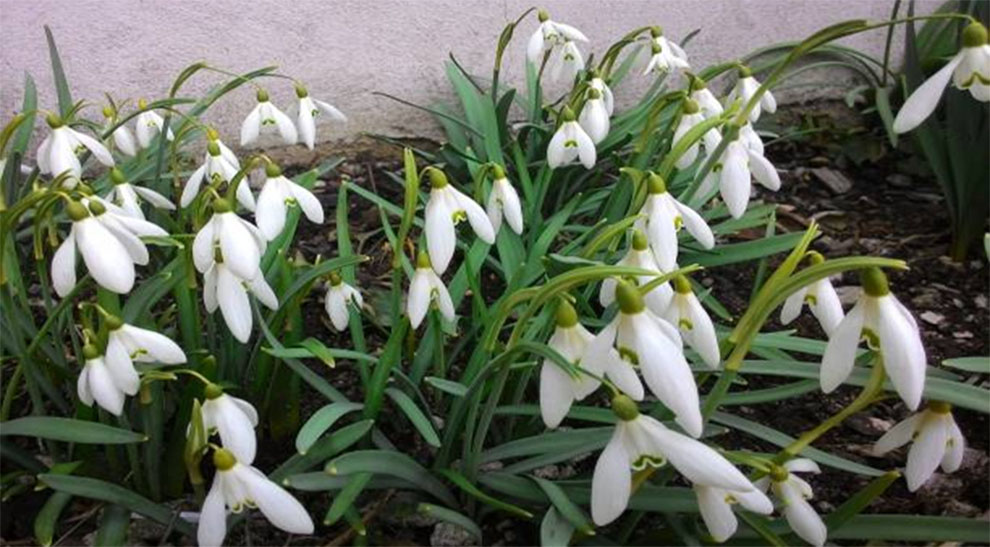
Once you finish the plantation process, you need to take care measures for the plant to grow healthy and thrive. Here are the steps you need to follow:
1. Sun
Snowdrops love full sun. So, you must ensure that the plant receives an average of six to eight hours of direct sunlight daily for good snowdrop care. However, since the plants bloom early in spring, offering them the necessary sunlight is not challenging.
They bloom before most trees, like oak and maple, and tend to cast shade and leaf out. One of the features of snowdrops is that you can plant them under partially-shaded spots like large deciduous trees, where most other plants struggle to bloom.
2. Watering
In cooler climates, Snowdrops do not require moist soil hence, lower watering needs. However, if planted in warmer regions, they will seek more water. How to care for snowdrops if you do not understand the plant’s watering requirement? You can touch the topsoil before the next watering session. If it feels dry, you can rewater it.
3. What is the best fertilizer for snowdrops?
Ensuring the plant receives the required nutrition is a pivotal aspect of snowdrop care. You can add 5-10-10 fertilizers meant for snowdrops while planting to give the plants a good start. In addition, you can also add some compost for secondary nutritional needs. It can also help the plant thrive in the next blooming season.
4. Dividing snowdrops
Perennial plants like snowdrops grow in clumps with a widening habit. However, after a few growing seasons, the plants start dying in the center and will look like a ring. How to care for snowdrops in such situations and have them blooming?
One of the best ways to keep the snowdrops blossoming and vigorous is by dividing them. Dividing equips you with longer-lived and healthier plants. Moreover, it also provides more plants from your existing plants.
5. Re-potting
We have discussed above how to grow snowdrops in pots. So, if you decide on planting them in the containers, you need to be extra cautious and ensure that you provide them with the necessary conditions and feed. Ideally, you must re-pot them annually to ensure that the soil is healthy and nutrient-rich.
Alternatively, you can grow them in the pots for one season and then plant them in the ground. As much as the snowdrop planting time, the re-potting time is also crucial. Hence, we recommend lifting the snowdrops after the flowering season and transplanting them before the foliage turns yellow.
6. Propagation
You can propagate the snowdrops by replanting, dividing, and lifting. When the clumps establish, you can divide and lift them post the flowering season. Hence, the best time to plant snowdrops in a new environment is from March to April.
You can use a hand fork to lift the bulb, ensuring the roots remain intact and the foliage is in place, and replant them in the garden. After this, water thoroughly.
Problems Your Snowdrop Flower May Face and How to Fix Them
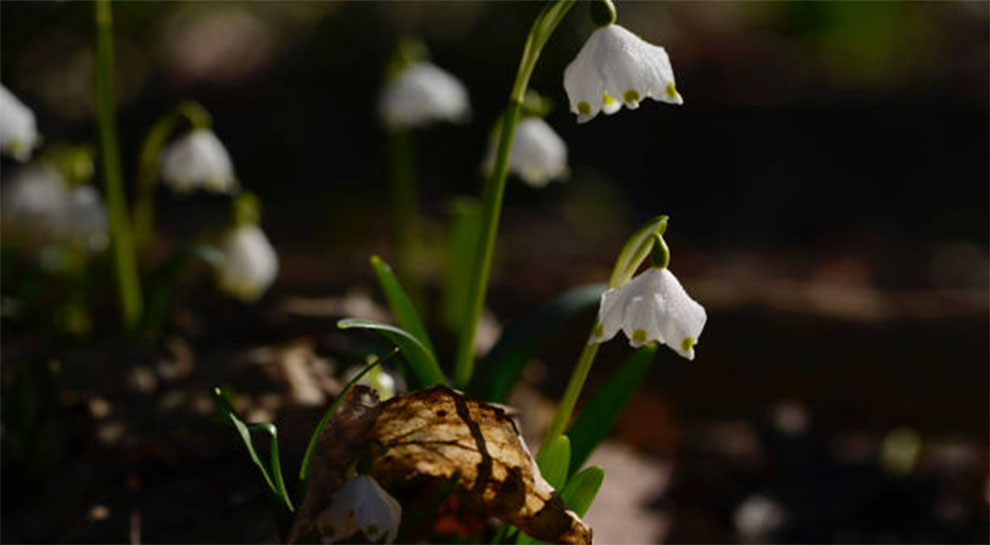
If you know how to grow snowdrops and care for them, it is rare for them to suffer from pests or diseases. They are low-maintenance, deer and rabbit-resistant, and mostly pest-free.
However, there is no guarantee that diseases and pests will never infect them. If that happens, here’s what you can do.
1. Spider Mite Infestations
The snowdrops might suffer from spider mite attacks because of the drier conditions inside if grown indoors. When you note spider mite infestation, you must immediately take your plant outdoors and spray some cold water on the plant. If this does not help, you can use an insecticide or miticide to cease the infestation. Alternatively, frequent misting is a good step towards snowdrop care.
2. Moles
Moles do not eat your snowdrops. Even though they do not have any nefarious designs on the snowdrops, they tend to dislodge them to find insects underground. To avoid this situation, you must grow your snowdrops in mesh containers.
Frequently Asked Questions
Ques 1. Can you grow snowdrops from seed?
Ans.Yes, snowdrops can be grown from seeds. The seeds are dispersed easily and let the plant colonize in the new suitable habitat.
Ques 2. can you grow snowdrops in pots?
Ans.Yes, you can opt for planting snowdrop bulbs in containers and pots.
Ques 3. How long do snowdrops take to grow?
Ans. Sadly, snowdrops take a long time to grow from the seedling to the flowering stage. Hence, we recommend buying them as bulbs, such that they are ready to flower the year after the plantation.
Ques 4. When do snowdrops bloom?
Ans. With proper snowdrop planting time, typically, the snowdrops bloom from February through March, usually while there is snow on the ground.
Ques 5. What to do with snowdrops when they finish flowering?
Ans. Plant care is vital even after blooming ceases. Snowdrops should not be deadheaded right after the blooms fade. If there is less rainfall, you must water the plants every week or two. Exposing the plant to direct sunlight for four to six hours with consistent watering can help the plant produce energy via photosynthesis, facilitating the bulbs to multiply underground.
When the foliage becomes yellow in late spring, you can stop watering. Never chop the leaves till they turn yellow on their own or naturally die back to the ground. It is particularly essential for snowdrop care when planting snowdrops in the meadows or the lawn. So, wait till the foliage dies back before the first spring mowing.
You do not need to dig up and store the snowdrops during the summer unless you wish to divide the bulbs and replant them in the fall. The plants do the best if left alone in the ground to naturalize and multiply on their own.
Ques 6. How to store snowdrop bulbs?
Ans. If you get the flowers from somewhere before it is the best time to plant snowdrops, you must store them properly in a cold spot away from direct sunlight in a location where it receives good air ventilation. A garage or a cool room wherein the temperature is between 45 to 55 degrees Fahrenheit is a suitable option, provided there is air circulation.
Alternatively, you can store the snowdrops in the fridge, but there should be no fresh fruits in there as that can damage the bulbs.
Key Takeaway – Planting Snowdrop Bulbs & Caring for It
| Hardiness zone | USDA Three Through Seven |
| Sun | Full sun to partial shade |
| Soil | Loamy, sandy, humusy, and well-drained with Acidic, neutral, and alkaline pH |
| Water | Water regularly if you live in an area that seldom receives rainfall. |
| Fertilizer | 5-10-10 fertilizer |
| Native areas | Western Asia and Eastern Europe |
| Toxicity | Yes – Toxic to people and pets |
| Flowering season | January to March |
| Maximum height & spread | 3 to 6 inches tall |
Happy gardening!
